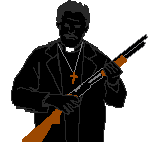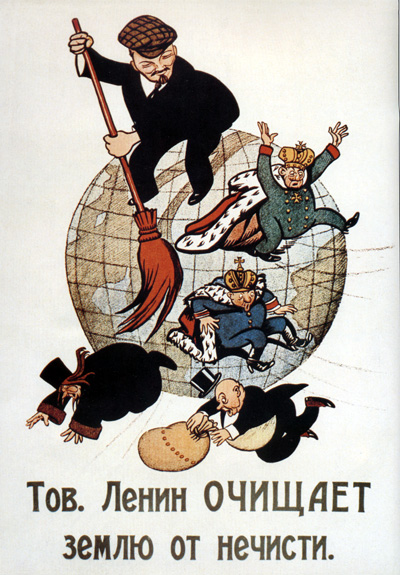On this day in 1918, the Finnish People's Delegation declared a socialist workers' republic (known "Red Finland"), at the start of the Finnish Civil War. The burgeoning working class movement was crushed by imperialist German forces.
Prior to 1917, Finland had been ruled as a Grand Duchy, an autonomous part of the Russian Empire. With the collapse of the Tsarist state in the wake of February Revolution and a long-term increase in nationalist sentiment, Finland declared independence on December 4th, 1917, formally recognized by the Russian Bolsheviks on December 31st.
Due to industrialized Finland having a strong revolutionary labor movement, conservative and proletarian forces were immediately thrown into conflict.
Red Guard paramilitary units representing the labor movement found themselves in a cycle of escalation with loyalist "White" Guards, culminating in a mass uprising of Reds in Helsinki on January 27th, 1918, marking the start of revolution. The following day, the Finnish People's Delegation was formed by members of the Social Democratic Party. Bourgeois forces fled to Vaasa, where they set up their own "White Senate".
The war saw the Whites, under the leadership of General Mannerheim, receive support from the German Empire, which was more well-established than the Reds' primary ally, the newly-created Russian Soviet Socialist Republic.
Following an imperialist intervention by Germany on the side of the Whites in March 1918, the war ended in defeat for the Reds in May. Over 12,000 people perished from starvation and hunger while imprisoned in White-operated POW camps, and reparations were not paid to former victims of the White Terror until 1973.
Lessons of the Finnish Revolution of 1917–1918

Megathreads and spaces to hang out:
- 📀 Come listen to music and Watch movies with your fellow Hexbears nerd, in Cy.tube
- 💖 Come talk in the New Weekly Queer thread
- 🔥 Read and talk about a current topics in the News Megathread
- 🐱👤 Come talk in the New Weekly PoC thread
reminders:
- 💚 You nerds can join specific comms to see posts about all sorts of topics
- 💙 Hexbear’s algorithm prioritizes comments over upbears
- 💜 Sorting by new you nerd
- 🌈 If you ever want to make your own megathread, you can reserve a spot here nerd
- 🐶 Join the unofficial Hexbear-adjacent Mastodon instance toots.matapacos.dog
Links To Resources (Aid and Theory):
Aid:
Theory:


There used to be a sort of socialist movement and commune in a rather obscure place called Munsala in Ostrobothnia, about 80 or so kilometers north of Vaasa. The Munsala socialism, or Munsala radicalism, they called it. It was started by people from the region who returned after having emigrated to the US in the late 1800's. Many of them had found that US labour rights were absolutely fucked, and had began to work with various labour movements, and eventually discovered Marxism. A few dudes that returned home to Munsala in the early 1900's started spreading the good word of Karl Marx in the region, and it was very popular among the almost entirely agrarian proletariat. It was a also rather religious movement. The local preachers took to incorporating the teachings of Marx in their sermons. They emphasised pacifism, sobriety, education, and parliamentarianism.
That is, until the civil war broke out. The Munsala socialists mostly tried to stay out of it, but since the whites had decided to base themselves in Vaasa (80km away) and Pietarsaari/Jakobstad (30km away), they found themselves pretty much at the heart of enemy territory. They were often harassed by whites and cops, and used guerrilla style hidey holes in the local forests to hide. Many who didn't hide were captured and executed or fled to Sweden. During the second world war, many Munsala socialists refused to fight, because of the finnish state's alliance with Hitler and therefore its support for fascism. The able bodied men went back into hiding in their old forest hidey holes, while the rest of the village kept watch for cops and whites. In the 1930's, a Munsala socialist and teacher named Walter Blomqvist fled to the US. He eventually ended up in Cuba, where he supposedly hung out with Castro and Che and took part in the revolution (here is an interview with the guy, in swedish)
Machine translated summary
The Munsala Socialism is said to have been eradicated in the 70's, after fur farming became a thing. It brought in vast amounts of money and resources to the thus far poor agrarian community, which "did away with any need for socialism".
This whole thing is of great personal meaning to me, because I grew up quite close to Munsala. I've driven through Munsala a fair few times. My grandma and grandpa both have roots in Munsala. Me and many in my family speak the same (or a similar) swedish dialect spoken in Munsala. So by all accounts, this should be common knowledge, or at least something I would have been taught, but no. I never ever once, not even a litte, heard of this before. Not a word about it in school or anything. Unbelievable. First time I heard of this was in maybe 2015, when a random woman at an anarchist café in Turku (southwest finland) overheard me saying something in swedish. She could tell I was from Ostrobothnia by the dialect, I guess. She asked if I'm from there, and I said that yeah, but I didn't really like it because of its still very prevalent white (both as in mayo and as in wrong side of the civil war) mindset and culture. She told me to not feel bad about it, because there is a vast and colourful history of labour movements and class struggle there, "for example the Munsala Socialists".
Finnish natopedia article: https://fi.wikipedia.org/wiki/Munsalan_radikalismi
Here is one article and videos about it in swedish: https://svenska.yle.fi/a/7-883429
full documentary, also in swedish: https://areena.yle.fi/1-4261007
Doesn't seem to be available with subtitles either. It's unfortunately very hard to find any more information about this in English. Erased history, I suppose.
This is really cool to hear, as I was also never taught about socialist movements besides the civil war.
Notoriously sober peace guy who likes paliarments, Charles Marks.
Some day you will pass this information on to the next generation the same way it was passed to you and that kid you tell will go on to ignite the revolution in Finland from their secret base in the woods outside Munsala.